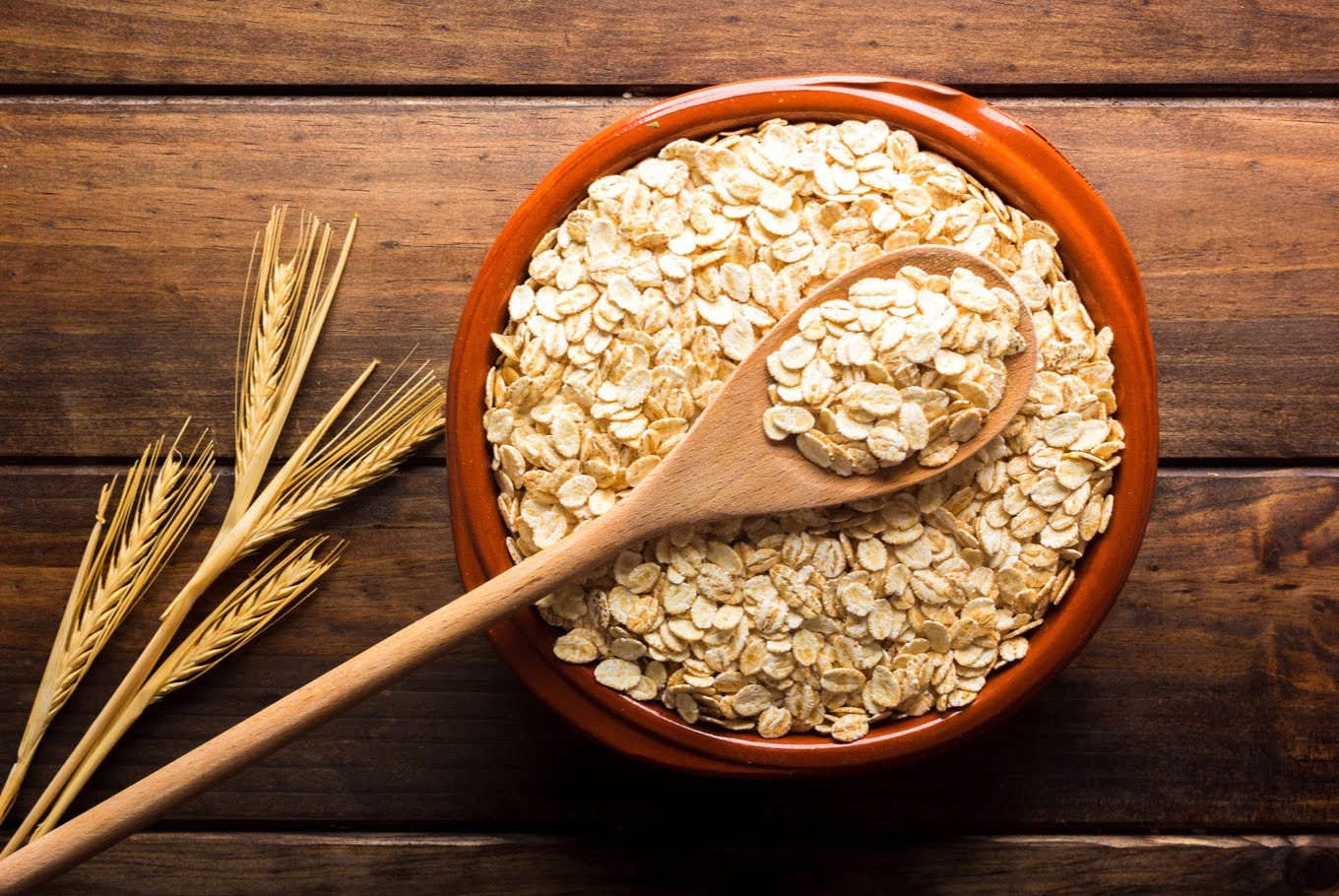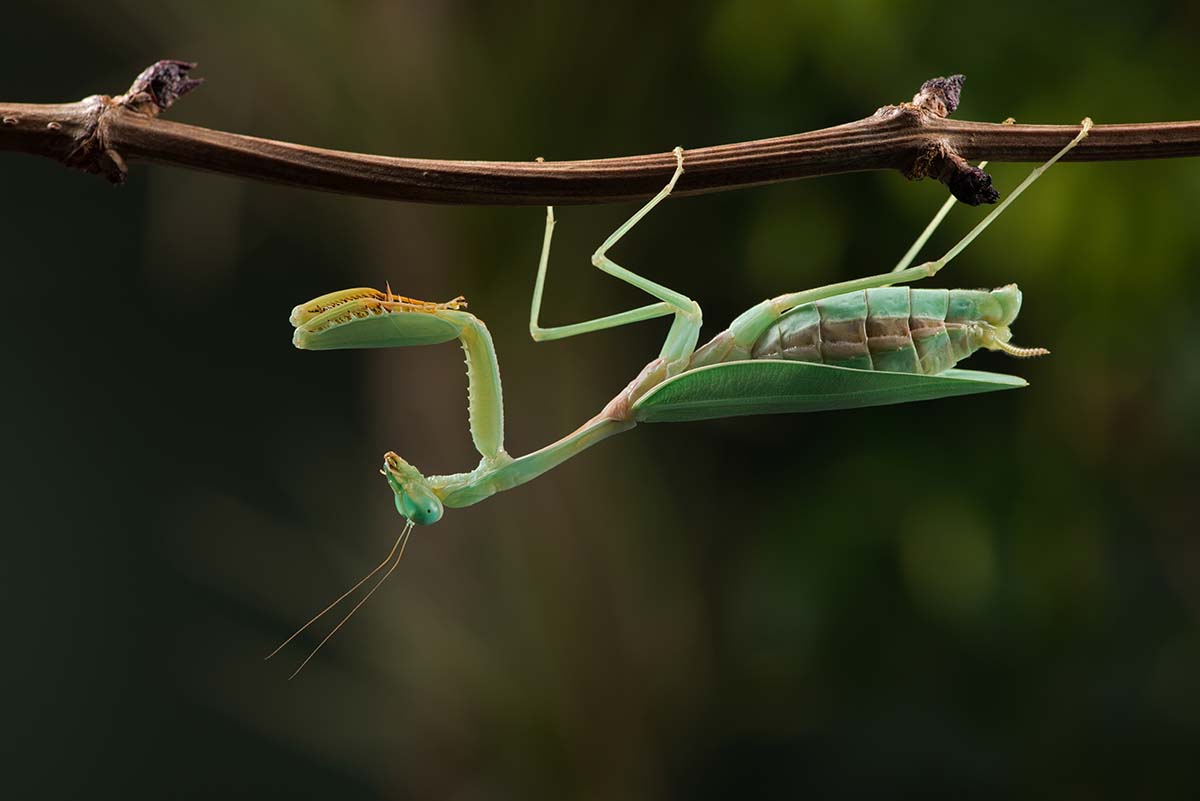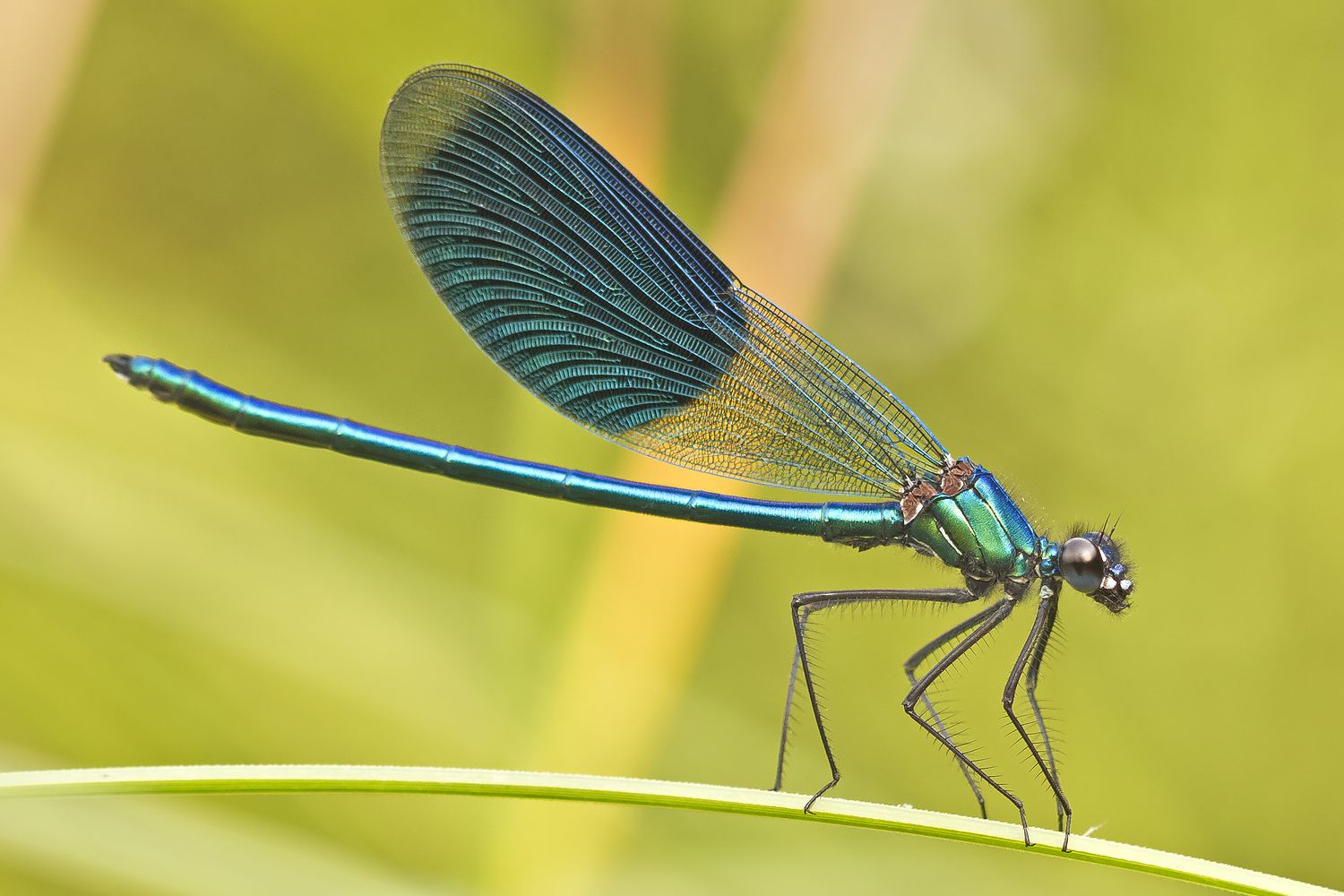Home>Gardening News and Trends>Latest News>What Insects Have Incomplete Metamorphosis


Latest News
What Insects Have Incomplete Metamorphosis
Published: December 7, 2023
Explore the Latest News on Insects with Incomplete Metamorphosis. Learn about their unique life cycle and fascinating adaptations in this informative article.
(Many of the links in this article redirect to a specific reviewed product. Your purchase of these products through affiliate links helps to generate commission for Chicagolandgardening.com, at no extra cost. Learn more)
Table of Contents
Introduction
In the fascinating world of insects, there exist diverse life cycles that showcase the wonders of nature’s adaptations. One intriguing form of development seen in insects is called incomplete metamorphosis. Unlike the more commonly known process of complete metamorphosis, incomplete metamorphosis offers a unique glimpse into the transformations these creatures undergo.
In this article, we will delve into the intricacies of incomplete metamorphosis and explore the characteristics that distinguish it from other forms of insect development. We will also examine the life cycle of insects with incomplete metamorphosis, highlighting notable examples that exemplify this phenomenon. Lastly, we will shed light on the importance of these insects and their impact on ecosystems.
Before we delve further into the subject, let’s take a moment to understand what exactly incomplete metamorphosis entails. Unlike complete metamorphosis, which involves distinct stages of egg, larva, pupa, and adult, incomplete metamorphosis consists of three main stages: egg, nymph, and adult. The nymph stage bears a resemblance to the adult form, with gradual changes occurring over multiple molts until maturity is achieved.
Incomplete metamorphosis provides a distinctive perspective on insect development, illustrating the intricate ways in which these creatures adapt and survive in their environments. Understanding the process and characteristics of incomplete metamorphosis can offer valuable insights into the complexity and diversity of the insect kingdom.
Definition of Incomplete Metamorphosis
Incomplete metamorphosis is a form of insect development characterized by three distinct life stages: egg, nymph, and adult. Unlike complete metamorphosis, which involves a dramatic transformation from larva or caterpillar to pupa, and finally to adult, insects with incomplete metamorphosis undergo gradual changes as they progress from nymph to adult form.
During the egg stage, the mother insect lays eggs, which are often deposited on leaves, in soil, or in other suitable environments. These eggs hatch into nymphs, which resemble miniature versions of the adult insect. Nymphs possess similar body structures and appendages but lack reproductive organs, wings, and full adult characteristics.
As the nymphs grow, they undergo a series of molts, shedding their exoskeleton and revealing a larger and more developed body underneath. With each molt, the nymphs gradually acquire more adult-like features, such as fully developed wings and reproductive organs. Unlike complete metamorphosis, where pupation is a distinct and transformative stage, the nymphs of insects with incomplete metamorphosis continue to molt until they reach their final stage of development.
Once the nymphs have completed their molting process and have acquired all the necessary adult characteristics, they emerge as mature adults. The adults are then capable of reproduction and play their respective roles in their ecosystems.
Incomplete metamorphosis is observed in various insect groups, including grasshoppers, crickets, cockroaches, dragonflies, and true bugs. This form of development offers certain advantages to insects, such as faster growth and the ability to continue feeding and growing while undergoing transformation. In addition, the gradual changes in body structure and behavior during incomplete metamorphosis allow insects to adapt more flexibly to changing environmental conditions.
Understanding the definition and characteristics of incomplete metamorphosis serves as a foundation for exploring the fascinating life cycles of insects with this unique development process. In the following sections, we will delve into the specific stages and characteristics that define this mode of insect growth and examine examples of insects that exemplify incomplete metamorphosis.
Life Cycle of Insects with Incomplete Metamorphosis
The life cycle of insects with incomplete metamorphosis is characterized by three distinct stages: egg, nymph, and adult. This developmental process offers a compelling glimpse into the gradual transformation and growth of these fascinating creatures.
The life cycle begins with the deposition of eggs by the adult insect. The specific location and method of egg-laying vary among different insect species. Some insects lay their eggs on leaves, while others may bury them in soil or attach them to suitable surfaces. The eggs serve as a protective casing for the developing insect embryo.
Once the eggs hatch, the emerging young, known as nymphs, enter the second stage of the life cycle. Nymphs closely resemble miniature versions of the adult insect, although they lack fully developed wings and reproductive organs. Despite these differences, nymphs possess similar body structures, appendages, and feeding habits to their adult counterparts.
During the nymph stage, insects with incomplete metamorphosis undergo a series of molts. Molting is the process by which the insect sheds its exoskeleton to accommodate its growing body. At each molt, the nymph sheds its old exoskeleton, revealing a larger and more developed form. This allows the nymph to continue growing and acquiring adult characteristics.
As the nymphs progress through multiple molts, they gradually develop wings and reproductive organs. The number of molts varies among insect species, with some undergoing only a few molts and others undergoing numerous molts before reaching adulthood. The gradual changes in body structure, behavior, and overall appearance during the nymph stage are key features of insects with incomplete metamorphosis.
Once the nymphs have completed their molting process and have acquired all the necessary adult characteristics, they enter the final stage of the life cycle: adulthood. At this stage, the adult insect is fully developed and capable of reproduction. The specific lifespan and behaviors of adult insects vary greatly depending on the species.
The life cycle of insects with incomplete metamorphosis offers several advantages. It allows for faster growth compared to insects with complete metamorphosis, as nymphs can continue feeding and growing while undergoing transformation. This type of development also provides increased adaptability to changing environmental conditions, as the gradual changes during the nymph stage enable insects to adjust to their surroundings more effectively.
Understanding the life cycle of insects with incomplete metamorphosis provides valuable insights into the growth and development patterns of these remarkable creatures. In the next section, we will explore the unique characteristics that define insects with incomplete metamorphosis.
Characteristics of Insects with Incomplete Metamorphosis
Insects with incomplete metamorphosis exhibit several distinct characteristics that set them apart from other forms of insect development. These features contribute to their unique life cycles and play a crucial role in their survival and adaptation in various ecosystems.
One of the key characteristics of insects with incomplete metamorphosis is the absence of a pupal stage. Unlike insects that undergo complete metamorphosis, where the pupa serves as a transformative and transitional phase, insects with incomplete metamorphosis bypass this stage altogether. Instead, they progress directly from the nymph stage to adulthood, undergoing gradual changes through successive molts.
Another distinguishing characteristic of insects with incomplete metamorphosis is the resemblance between the nymphs and the adult form. Nymphs closely resemble miniature versions of the adult insect, sharing similar body structures and appendages. However, nymphs lack fully developed wings and reproductive organs, which are acquired during the molting process.
The gradual development and acquisition of adult characteristics through molting is a defining trait of insects with incomplete metamorphosis. With each molt, the nymph sheds its exoskeleton and emerges with a larger and more developed body. This growth pattern allows for faster development compared to insects with complete metamorphosis, as the nymphs can continue feeding and growing while undergoing transformation.
Another characteristic exhibited by insects with incomplete metamorphosis is their ability to adapt flexibly to changing environmental conditions. The gradual changes during the nymph stage enable these insects to adjust their body structure, behavior, and feeding habits in response to varying environmental factors, such as temperature, food availability, and predation pressures.
Furthermore, it is worth noting that the life cycle duration of insects with incomplete metamorphosis varies among species. Some insects may complete their entire life cycle in a matter of weeks, while others might take several months or even years. The specific duration depends on factors such as species, environmental conditions, and availability of resources.
Insects with incomplete metamorphosis have evolved to thrive in various ecosystems, playing essential roles in pollination, decomposition, and food chains. Their ability to rapidly adapt and reproduce makes them crucial contributors to biodiversity and ecosystem stability.
Understanding the characteristics of insects with incomplete metamorphosis provides valuable insights into the diversity and complexity of insect development and enhances our appreciation for the remarkable adaptations seen in the natural world. In the subsequent section, we will explore examples of insects that display incomplete metamorphosis.
Examples of Insects with Incomplete Metamorphosis
Insects with incomplete metamorphosis can be found in a wide range of taxonomic groups, each exhibiting unique characteristics and adaptations. Let’s explore some notable examples of insects that undergo this fascinating form of development.
1. Grasshoppers and Crickets: These insects belong to the order Orthoptera and are known for their powerful hind legs and ability to produce chirping sounds. Grasshoppers and crickets lay their eggs in the soil, and when they hatch, the nymphs resemble miniature versions of the adult insects. As the nymphs grow, they molt several times before developing fully formed wings and reproductive organs.
2. Cockroaches: Cockroaches are highly adaptable insects found worldwide. Their life cycle begins with the deposition of egg cases, known as oothecae, which contain multiple eggs. The nymphs that emerge from these oothecae closely resemble the adult cockroaches and undergo multiple molts before reaching maturity.
3. Dragonflies and Damselflies: These charismatic insects belong to the order Odonata and are known for their vibrant colors and incredible flight abilities. Dragonflies and damselflies lay their eggs in water, and the nymphs that hatch are aquatic and undergo underwater development. As the nymphs grow, they molt several times before climbing out of the water and transforming into their adult forms.
4. True Bugs: True bugs, belonging to the order Hemiptera, encompass a diverse group of insects that includes species like stink bugs, shield bugs, and water bugs. True bugs lay their eggs on plant surfaces, and the nymphs that hatch closely resemble the adult insects. The nymphs undergo several molts before reaching adulthood, gradually acquiring fully developed wings and reproductive structures.
These examples highlight the incredible diversity of insects with incomplete metamorphosis. Despite their differences in appearance and habitat, they all share the characteristic features of gradual development, molting, and the absence of a pupal stage.
Insects with incomplete metamorphosis play crucial roles in ecosystems. They serve as important pollinators, helping to fertilize plants and facilitate their reproduction. Additionally, many insects with incomplete metamorphosis are key contributors to food chains, serving as a source of food for other organisms, such as birds, reptiles, and mammals.
Understanding the examples of insects with incomplete metamorphosis enriches our knowledge of the immense variety of insect life and their remarkable adaptations. In the final section, we will explore the significance and ecological importance of these insects.
Importance of Insects with Incomplete Metamorphosis
Insects with incomplete metamorphosis play a vital role in ecosystems, contributing to various ecological processes and serving as key players in the balance of nature. Their significance extends beyond their unique life cycles and developmental patterns.
One crucial ecological role of insects with incomplete metamorphosis is pollination. Many of these insects, such as bees, butterflies, and certain species of beetles, are effective and efficient pollinators. As they move from flower to flower in search of nectar or pollen, they inadvertently transfer pollen grains, facilitating fertilization and ensuring the reproduction of numerous plant species. Pollination by these insects is essential for the production of fruits, seeds, and the overall biodiversity of plant communities.
Additionally, insects with incomplete metamorphosis contribute to nutrient cycling and decomposition. Many species, such as certain beetles and flies, feed on decaying organic matter, breaking it down and aiding in the process of decomposition. By consuming and recycling dead plant and animal material, these insects play a crucial role in releasing nutrients back into the soil, facilitating the growth of new plants and supporting the overall health of ecosystems.
Furthermore, insects with incomplete metamorphosis serve as a vital food source for other organisms within their respective ecosystems. Birds, reptiles, amphibians, and mammals often rely on these insects as a primary or secondary food source, forming an important link in the food chain. The availability and abundance of insects with incomplete metamorphosis can directly impact the populations and dynamics of higher trophic levels.
Moreover, some insects with incomplete metamorphosis exhibit remarkable adaptations and behaviors that benefit both themselves and their environments. For example, certain species of ants and termites engage in complex social structures, constructing intricate colonies that contribute to soil aeration and nutrient cycling. These insects play crucial roles in maintaining healthy soil ecosystems and facilitating the growth of plants.
It is important to acknowledge and appreciate the ecological services provided by insects with incomplete metamorphosis. Their roles in pollination, nutrient cycling, and food webs are fundamental to the stability and functioning of ecosystems. Maintaining healthy populations of these insects is essential for the overall health and sustainability of our natural environments.
By understanding the importance of insects with incomplete metamorphosis, we can make informed decisions and take necessary actions to protect and conserve these valuable species. Preserving their habitats, reducing pesticide use, and promoting sustainable practices are some of the steps we can take to ensure the continued well-being of these remarkable creatures and the ecosystems they inhabit.
Conclusion
Insects with incomplete metamorphosis exhibit a fascinating and unique mode of development, distinct from the more commonly known complete metamorphosis. Their life cycles, characterized by egg, nymph, and adult stages, offer a captivating glimpse into the gradual transformations these creatures undergo.
Understanding the definition, characteristics, and examples of insects with incomplete metamorphosis provides valuable insights into the diversity and complexity of insect life. From grasshoppers and crickets to dragonflies and true bugs, these insects occupy various habitats and play essential roles in ecosystems.
Insects with incomplete metamorphosis contribute to important ecological processes such as pollination, nutrient cycling, and providing a food source for other organisms. Their adaptability and flexibility allow them to thrive in diverse environmental conditions.
Recognizing the significance of insects with incomplete metamorphosis encourages us to appreciate and protect these remarkable creatures. Conserving their habitats, reducing pesticide use, and promoting sustainable practices are crucial for ensuring their continued existence and the health of our ecosystems.
By delving into the intricacies of incomplete metamorphosis, we gain a deeper understanding of the wonders of nature and the marvels of insect life. The study of these remarkable creatures continues to inspire awe and curiosity, inviting us to explore further and unravel the mysteries of the natural world.










